Back in late August of this year, I authored a lengthy, in-depth preview, based on my time spent in the Fallen Enchantress beta. If this review is your first encounter with Fallen Enchantress, I highly recommend you first read through the preview if you are interested in obtaining more information on all the aspects the game contains.
I’ll be focusing here more on how things have changed since the beta, what new features have been added, and I’ll be providing my verdict on how the final game as turned out.
What’s new
The core mechanics of the game haven’t changed since my preview during Beta 4, so I won’t rehash too much about them. At the same time, Stardock has not been resting idly since then, and several new features, bug fixes, and balance changes have been implemented since that time. These include things like additional spells, additional tactical battle maps, achievements, and new random events.
I am also happy to report that many of the bugs that plagued my Beta 4 playthrough, and some of my Beta 5 playthrough, have been eliminated. Health bars now update properly in combat. Arrows now fly out of the bows they originated from instead of flying in randomly from parts unknown off screen. You can no longer fool the system by changing your building queue and rushing production to get a building at a reduced cost (or even profit from rushing it). While I was worried for awhile about some of these bugs, bugs which has been around for quite awhile, I am pleased to report that they got them fixed by release.
In actuality, the biggest changes between then and this official release are the additions of the scenarios tab, including the Fallen Enchantress scenario/campaign, and the Workshop, which houses all the modding tools. I’ll be getting to those a little bit later in this review, but first I’m going to touch on the sandbox game, since that is what I feel the core 4X strategy fan is going to be most interested in.
Playing in the sandbox – What I enjoy
Fallen Enchantress has a lot of options to suit a lot of different players. I mentioned customization in my preview a couple months back, but since then they’ve only continued to expand in that area. Since I covered sovereign and faction creation last time, I’ll comment a bit more this time about world creation.
You have multiple options when creating a new world, including selecting a pre-built map (there are 6 of these included) or a randomized one. When creating a randomized map, you can also select map size and world type (swamp or desert, for example). With either map type, you can then customize numerous other options including how many champions (heroes) are available for hire, how prolific and dangerous monsters are, how big a role magic will play, resource availability, and random event frequency. That’s quite a large of options to help you tailor the game to your playstyle in my opinion, and I didn’t even name all of them here.
I love the early game. Building up your heroes is a key part of the early game, and I personally enjoy the feeling of progress this brings. Typically you’ll start with your sovereign and 1 nearby champion you can recruit to your cause. As you explore the map, you’ll discover goodies you want to grab, locations for later settlement, monsters to be wary of, and resources you’ll want to make sure you grab before your opponent does.
As you progress from fighting mites, onto to bandits, and later onto tougher enemies like bears and stalkers, you’ll feel a sense of accomplishment. Your heroes will be gaining levels, donning better armor, and wielding fiercer weapons. In some cases, they’ll be learning new spells and you’ll start casting enchantments on them, making them feel even more powerful.
Meanwhile, your first couple of cities will be busy building workshops and town halls to raise your production and reduce your unrest. As each turn ends, you feel like every decision you make really matters, and you worry if straying too far from your cities while exploring will leave you vulnerable to others. On the other hand, these early days are the land grab era, and you’ll want to build new cities to expand your borders before someone else does.
Mid game though is the most exciting part of the game for me. You’ll know you’ve reached mid game when you have met multiple other factions, have begun clearing out some of the medium to strong monsters in your nearby vicinity (but not dragons), and have started considering building some actual troops to accompany your heroes or defend. It’s at this point that you’ll have to start thinking about who you need to befriend and who you can afford to war with, if necessary.
In most cases you will be boxed in to an area with your borders surrounded by other factions. The only way out is by striking up a deal or striking up a war. On the more challenging difficulties, it is quite possible that your faction score will be quite a bit below many of your competitors, and you’ll have to start seriously considering your options before it’s too late.
Depending on how quickly you expanded early on, and what victory condition you are looking to achieve, you may be able to get away with not expanding at all, but this depends on quite a few factors. I’ve even successfully achieved my goals by bribing competitors to war with one another. Devious, yet deliciously satisfying I must say.
The available victory conditions allow a relatively passive playstyle to still remain competitive. As an example, I was able to achieve the Spell of Making victory while maintaining fewer cities and occupying less of the landmass than two other factions. As this victory condition only required that I have a few certain resources and enough research to unlock the buildings I would need, it was the easiest one to achieve while remaining relatively neutral to outsiders.
The master quest victory also allows you to play a relatively neutral game, although depending upon its location, you may need access through enemy territory to get to it. The alliance victory is relatively self-explanatory, and can be a nice way to win if you are in a world where everyone is at relative peace with one another.
Conquest is the generic, standard conquer the world victory condition, but thanks to the demand surrender option, is made slightly less tedious since you won’t necessarily have to kill them to their last man. In fact, I’ve even seen the AI voluntary surrender to me after I took several of their holdings, but this has the downside of not receiving their sovereign as a playable hero for your side (which you obtain if you demand their surrender).
Achievements and objectives that fit outside the standard 4x gameplay are a nice addition to the game. While out exploring, I stumbled upon an area inhabited by a rather powerful enemy. I was given a quest, a challenge so to speak, to subdue this foe should I be so bold. This was later in my game, so I of course bravely decided to save my game (in preparation for reload) before seeing what it was made of. Thankfully, I was powerful enough at that time to dispatch it, earning an achievement and some other rewards as a result.
These types of objectives, including some of the random events I’ve not even seen yet, are what help separate Fallen Enchantress from other 4x games I’ve played.
Playing in the sandbox – What I’m not so happy about
Despite many months of beta testing and fan feedback, there are still some elements of Fallen Enchantress that fall a bit short in my eyes. Now that I’ve covered some of the things I really enjoy about the game, it’s now time to talk about a few of the things I don’t enjoy quite as much.
While most of the original bugs I encountered have been eliminated, there are still some design decisions and gameplay elements that aren’t going to appeal to everyone. Fallen Enchantress is a game that can be very unforgiving if you are placed in an undesirable starting location (randomly). If you are planning to play a spellcasting heavy faction with a mage sovereign, and then find you have limited access to shards and essence in your starting area, you are going to have to change your strategy or restart to obtain a new map/starting position on any of the harder difficulties. A lot of this is luck based, unfortunately, though some options that you select before the game, like magical strength (shard availability) and monster frequency, can make it less likely you’ll need to start over.
It will likely take you awhile to understand what monsters you can handle and which you can’t as there is some inconsistency in army strength labeling. I’d argue that there should be more levels of difficulty and a chart or graph indicating the hierarchy of these levels. Some monsters are listed as “Weak”, but end up being as hard as a higher level monster. This is true across nearly all categories, and some monsters you’ll think you can take easily will end up sending your injured sovereign and company back to their closest place of refuge. This can cost you 5 seasons or more in recovery time, on top of the permanent injuries, some of which can be quite devastating to that hero. If this happens early on during the exploration phase, you have just been placed at a serious disadvantage. This is forgivable in the case of encounters you choose to engage in, as you can either face the consequences of your action and move on, or save and reload if you’d rather proceed cautiously.
I’d argue that saving and reloading, at least until you get the hang of how dangerous certain monsters actually are in combat, is a perfectly valid and fair option. If the difficulty rating was a bit more revealing, I’d be less inclined to reload after taking a risk. The bigger problem is when you inadvertently build a city or outpost near a monster den and either immediately, or after the city’s influence expands, you unleash these monsters by displacing them from their homes. Dragons, Slags, Elemental Lords, and Shrills can give you a run for your money early on, and even into the mid-game in the case of dragons. It is important to keep these monsters in mind whenever you expand and explore. Inevitably, you will eventually run into these harder monsters as you expand out from your starting area.
Tactical combat still has some issues. Troop placement in tactical battles has been improved, but still lacks the granularity that would allow the player to place units in their optimal positions. Often times, my most powerful hero, sitting atop his steed, will be placed behind several weaker hero units. Since I have typically built this hero into an armored and enchanted super unit, I prefer to have him out in front absorbing the enemy blows. Instead, the game will often place my weaker mage hero into the front lines at the battle start. Unfortunately, a high initiative, high movement enemy can reach and potentially kill him in a single hit before I can react to the AI’s poor tactical placement of my units. This has led to my weaker heroes being crippled with numerous injuries completely unnecessarily and is immensely frustrating.
Auto-resolve, at least during combat, still makes poor decisions. During late game battles, I find myself wanting to use auto-resolve more often as the battles tend to follow the same general monotonous routine. In one instance, I was saving my mana up to cast a powerful city enchantment that cost 100 mana. I was fighting a battle with my sovereign and his party against some relatively weak foes and after deciding to manually fight the battle, turned on auto-resolve to let it work itself out. Having fought similar armies already, I knew that my party could win with no friendly casualties easily, so I thought this would be safe. Little did I know that, before I could break out of auto-resolve mode, the AI had spent nearly 40 to 50 mana completely unnecessarily, bringing me from 88 mana (that I was saving) down close to 40. On the positive side, auto-resolve, outside of combat at least, seems to be less willing to spend such a vital resource unnecessarily.
Late game is still a tedious chore. I really don’t like playing the late game. This is the stage where you’ve started turning the tables on your opponents, your faction score is rising quickly, and you have likely defeated their sovereigns in combat numerous times. You may still be at some risk, but you’ve started capturing their cities and now have an ever increasing mountain of micromanagement. Each new city brings with it more build queues as well as more area to defend. I start feeling like I really need to build each and every one of these cities up, to maximize my resources and capabilities, but doing so makes each turn take longer and longer. I really wish they had AI governors who I could assign to take care of these tasks for me. Even if they aren’t as intelligent with their selections as I would be, it would be better than ignoring these newly captures city build queues, which is what I typically do in the late game.
The AI plays by its own set of rules. Based on some evidence provided by Fallen Enchantress players, the AI seems to have some inherent advantages even at difficulty levels where they aren’t supposed to. To be perfectly honest, I’ve not noticed these advantages directly, but a lot of people have commented on the AI’s ability to bypass monsters at times and settle tiles that shouldn’t be usable. It hasn’t prevented me from winning numerous times on harder difficulties, but it is worth mentioning that some level of AI cheating is likely going on in this game. This is true in the majority of 4x games though, and should not really be held against Fallen Enchantress in my opinion.
There are some other miscellaneous bugs that still need to be ironed out. The tactical heal spell had no effect when I used it. In fact, the in-game description reads that it “heals target unit by %d.”. The campaign itself had several bugs, but I’ve noted those below as they are specific to that scenario.
There is no multiplayer in Fallen Enchantress currently. If you are the type who likes to play 4x games in a multiplayer mode, you unfortunately will not be able to.
Fallen Enchantress – the campaign… or in this case, the scenario
One of the last few features added into the Fallen Enchantress experience upon release has been the “Fallen Enchantress” scenario. Stardock was very upfront in stating that this scenario, which essentially serves as a backstory campaign for the game’s setting and characters, plays quite a bit different than the core 4x gameplay of the sandbox mode. As someone who also enjoys RPGs on occasion, I was quite intrigued to see what they had come up with.
The story begins with a young Prince, Relias, being tasked by his Queen, Procipinee, to locate a young Oracle. If you’ve played the sandbox game or even taken a look at some of the sovereigns and factions involved in the game, it is likely you will immediately have some ideas about where this story is going. Throughout the adventure, there are occasional cutscenes consisting primarily of still images with voiceover. I found these to be rather interesting and enjoyed both the artwork and voice acting. Make no mistake though, in true RPG fashion, you will still be reading a fair amount of text if you want to follow what is going on. Some of this text will be related to your main quest line, some to side quests, some to internal dialog or dreams that Relias remembers, and some to discussions between you and your other party members.
The “Fallen Enchantress” scenario does not take place on a single map, which was my first fear when I started it and saw how small the map was. In actuality, it takes place over a series of maps and storyline chapters. Your heroes, their items, your research, and at least some of your gathered resources transition with you whenever you change maps, so there is a nice RPG feel and progression in that aspect. Since each map transition consists of your heroes traveling to new locations, you will change your primary city and will need to build each one up as you go along.
Research, city building, diplomacy, and other 4x gameplay staples are in no way the primary focus of this scenario. In fact, you could likely beat the whole scenario with very little of the research unlocked and no troops trained. The clear focus of this scenario is to proceed like a party based RPG set in a 4x world. While there is some decision making to be had here, for instance adding one party member to your group will sometimes eliminate the possibility of adding a different party member, the adventure is primarily a linear story without most of the strategy elements. Tactics will still play a big part though, should you choose to fight your battle manually. As in the sandbox base game, I recommend manually fighting your battles, at least early on, as you will undoubtedly get a better result.
Given the fact that Fallen Enchantress is clearly a 4x Fantasy game, one might ask why they removed several toys from the sandbox (city building/settling, diplomacy, etc.) when designing this scenario of the same name. In my opinion there are two reasons this scenario exists. One, is that they wanted a way to expose the backstory behind the different factions and situations in the sandbox game. By stripping away some of its strategy elements, they enabled its RPG elements to take center stage and tell the story. The other is that they wanted to promote the fact that the entire scenario (minus the cutscenes, anyway) could be created by the modding community using the easy to use tools they have provided within the game. As someone who has done a fair bit of modding in the past, I think the scenario does a pretty good job of showing potential modders what kinds of events and elements they could incorporate into their creations.
During my recent playthrough of the entire campaign, I observed several issues and bugs. Randomly, my primary hero, Relias, would not appear on the battlefield with the rest of his party. After the battle, the after action report indicated he had lost all his health and fallen in combat, when in actuality he had been at full health and didn’t get to take part at all. Thankfully, the remainder of my party was still strong enough to win in these situations, but it was disappointing to see my most powerful, and well armed, hero absent from these battles for no legitimate reason.
Quests sometimes did not trigger, perhaps because I did things out of order, until I wandered around the map a bit and somehow got them to register. In one specific quest instance, I was supposed to have unlocked a powerful spell, yet I never saw a new spell appear in my spellbook, nor did I see a new scroll or item appear in my inventory. Also, I would have preferred a way to add movement speed to my entire party. I was able to obtain a horse for Relias, but I was restricted to 2 movement points per turn for the entire campaign due to the other party members still being on foot.
Scenarios and Modding
The modding capabilities built into Fallen Enchantress appear to be rather robust. Several mods have been in development since early in the beta stages, and I fully expect to see these mods become more refined and that many additional mods will also appear in the coming months. Up until now, modding has been done solely through the use of XML, but now some powerful new world building tools have been released in an area off of the main menu called the workshop.
The workshop houses several tools, including:
The builder forge (tile editor), where you can design individual tiles as seen in the game.
The cartographer’s table, where you can build a custom map and place tiles, including those you’ve created in the builder’s forge.
The particle cauldron, where custom particle effects can be created.
The faction creator, where custom factions for use in your scenarios can be designed.
Obviously, the mods will only be as good as the modding community, but I feel like the right mods could easily increase the value Fallen Enchantress brings to the table.
Final Verdict
I’d advise disappointed fans of its predecessor (Elemental: War of Magic) to keep an open mind about Fallen Enchantress. It really is an enjoyable 4X fantasy game. The main source of my frustrations with it are in regards to late game micromanagement, and if Stardock, or an aspiring modder, can create a way to overcome this difficulty, I’d be much more willing to play epic style maps with tons of opponents.Until then, I’ll personally be sticking to smaller maps with less opponents and less cities.
I feel as though Stardock has successfully redeemed themselves for their past failures, and we now approach a new chapter in this epic saga. I personally can’t wait to see what enhancements and features, both official and unofficial, will be coming in Fallen Enchantress’ future.
|
Space Sector score:
8.7/10
great
|
|---|
| The Good: – Highly customizable to each player’s preferences – Quests and RPG elements expand the game beyond the traditional 4X genre – Powerful modding tools and potential for future adventures or overhauls – Interesting early and mid game phases |
| The Bad: – Late game unnecessarily tedious – Difficulty often dependent on randomness and/or luck – Tactical and auto-resolve options could use further polish |
More screenshots

25 Comments
Related Articles:
- Fallen Enchantress: Legendary Heroes Beta Now Available
- Fallen Enchantress: Legendary Heroes Expansion Announced
- Fallen Enchantress: Legendary Heroes Officially Out Today
- Fallen Enchantress: Legendary Heroes – The Dead World DLC
- Kalypso Media to Publish Box Version of New Stardock Games

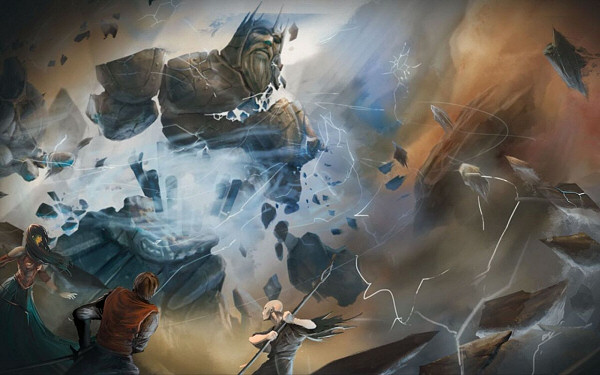
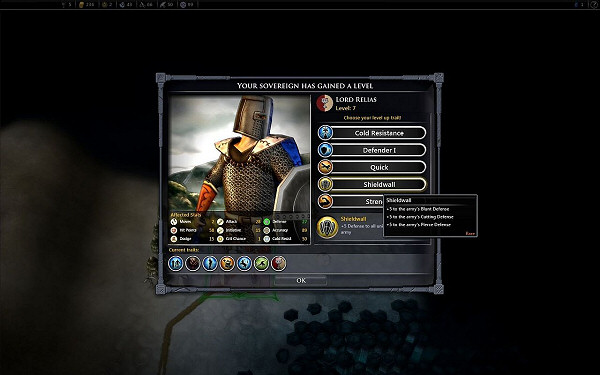
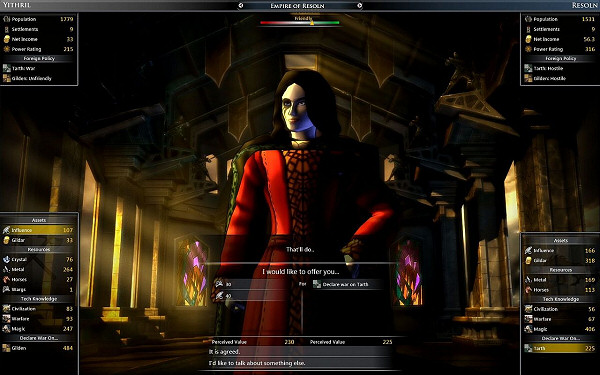
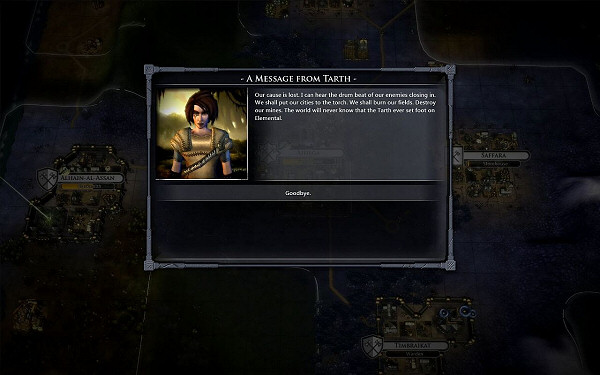
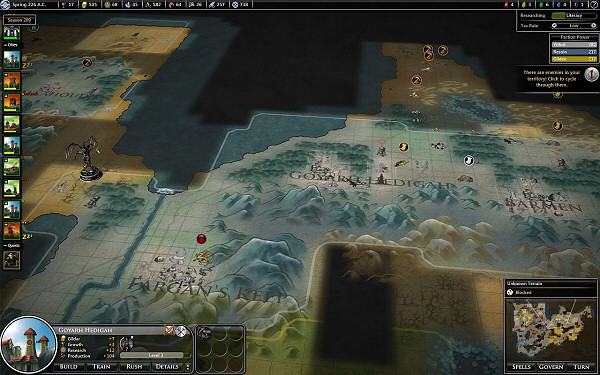
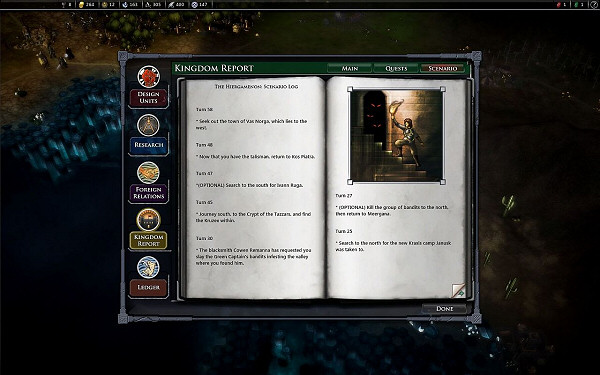
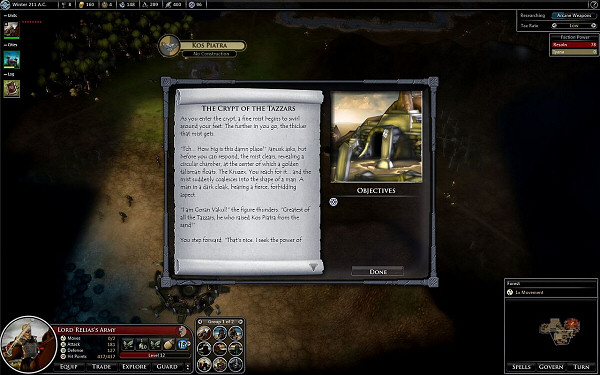
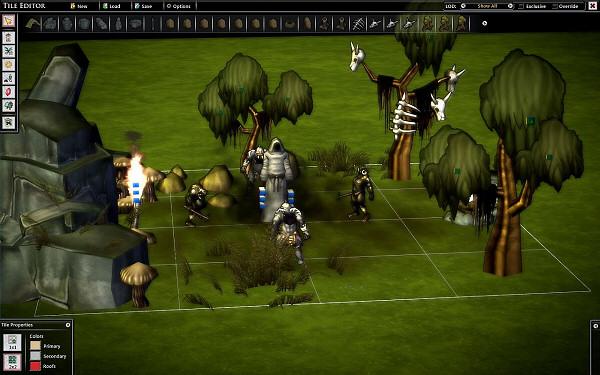
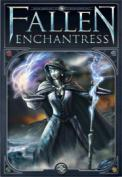
















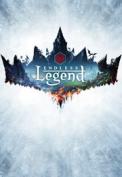




Excellent review, as always. I’ve taken the liberty to provide a link to it on the FE forum.
I’m pretty stoked on it, definitely want to play it. I think I will save it for those dark winter months ahead though.
This review seems to follow the general consensus. It is a somewhat flawed, but enjoyable experience. I do have a question, however. Some of the other reviews note the hybrid nature of the game and criticize it because it is not quite a strategy game but not quite a 4x either. It lacks depth in combining the two. Did you notice this ever, Keith?
Hi Alex. I hadn’t read any of the other official reviews prior to writing mine, but I have since read some of the other articles and understand why your question has come about. Based on some of the things I’ve been reading, I have to say that I don’t feel the same as some of the other reviewers.
Fallen Enchantress is a strategy game first and foremost, but the RPG elements play a pretty significant role in the early and mid game. The early and mid game involve a lot of exploration, monster hunting, questing, and searching for suitable settlement locations and resources. Meanwhile, you will be researching something, most likely something to increase production or research early on. You’ll also be building up your infrastructure in your starting city with things like workshops and lumber mills. You will also likely train some pioneers to settle new locations or claim resources via outposts if a suitable settlement location isn’t nearby a vital resource. Outposts can also be useful to place just outside of a monster den as you can safely claim a resource that way without risk of it growing larger and displacing the monster.
For the entire early game, and a good portion of the mid game, I don’t tend to build any troops at my cities. I use my sovereign hero and whatever other champions he has hired to explore and clear territory. In some cases, I’m clearing monsters out so I can safely build an outpost or a city. This may just be my playstyle, but I don’t tend to research warfare items or train basic spear type units early on. I’ve found that in nearly strategy game I’ve ever played, building up a solid infrastructure early on is key to defeating your opponents later on. In Fallen Enchantress, this is still true, but in addition taking additional settlements is also critical, as there are only so many valid locations capable of supporting a city.
Anyway, as the game progresses, and most of the quests and non deadly monster spawns have been cleared, the game swings its focus a bit more towards the 4x strategy side of the house. Diplomacy becomes more important, as I think I described in the way I manipulated my opponents. You’re going to end up boxed in and you’ll likely have to start making some decisions on how you are going to win. Building units to defend with becomes more important as your empire becomes vast and you won’t have enough strong champions to defend everywhere. I once even lowered a mountain to make a pass between two of my cities so I could use one defensive force to cover both of them.
I could go on, but in essence, I’d say the game’s focus on leveling your sovereign and champions as your sole force early on pushes the game into RPG territory early on. I mean this only from a statistical and item collection sense, as true storytelling isn’t a factor in the sandbox game. I’ve not played many 4x games where story is a consideration in sandbox mode anyway though. The most important backstory related thing to keep is mind is which races are empire and which are fallen. You will start with favorable relations with your affiliated faction, and unfavorable with the other. Also, attacking a race of your own faction is a really bad idea. If you do that, you get a large penalty to relations with all the factions of your same type. You are basically branded a traitor, so to speak.
The end game is where Fallen Enchantress needs to pick things up. I typically play on challenging mode, and if I can make it past the early game’s ups and downs (and random monsters), I have yet to lose in the mid to late game. I could always up the ante though, by placing myself alone against 7 opponents who are all allied together, if I really wanted to. There seem to be plenty of ways to make Fallen Enchantress a harder game, if difficulty is a concern. I also find that playing the pre-built sovereigns provides a more balanced game. I’d only use a custom sovereign if I increased the difficulty or provided the AI some custom sovereigns as well. It is just too easy to make stronger sovereigns and races than the game ships with, and you’ll likely cheapen your experience if you do so. To each his own though…
Sounds like you really like the early game, but does waiting so long to get to the strategic part bother you at all? Personally I’d enjoy it more if the hero didn’t overshadow the rest of the game for so long.
Also have you had any issues with the tactical AI? In my experience it doesn’t react to your builds at all, so there’s a few army comps that are very beatable but the AI is nearly defenseless to. Two armored and high dodge heroes with a line of archers behind them, for example.
The enemy tactical AI has gotten better about trying to get the first move in. They also will often spread out and try to reach the troops in your back row. Since the tactical maps are a decent width, it is much harder to defend your archers by blocking tiles as you would in something like Heroes of Might & Magic. They also tend to fire their arrows at my weaker caster heroes, not my armor clad guy out front, so I tend focus down their archers/mages as soon as I can.
Building a high armor/dodge hero and sending him out front is a viable strategy that works quite well. The strategy you describe is what I eventually used to defeat Yithril and their juggernauts in one of my games. I found that focusing purely on dodge and armor was still getting my heroes killed. Eventually I added archers to the back row and realized that the 0 armor juggernauts were very prone to missile fire. They should probably allow the AI to cast a dispel to remove all the enchantments I have placed on my hero during a combat unless I counterspell. That or limit the enchantments I can have on a champion to perhaps 1 for every 5 levels my champion has gained.
I almost never care about a game’s aspects other than its mechanics. Fallen Enchantress is unique for me in that I feel that its biggest weakness is its atmosphere.
The game feels like an inappropriate vehicle for introducing the grand saga that its backstory pretends to be. It also doesn’t help that this backstory is particularly poor, even for the genre. I wish that the backstory were less intrusive, or that it were presented much more simply so that I could appreciate it. Master of Magic and Warlock have no backstory. Age of Wonders has a backstory, but it’s presented at a pace that matches the pace of the game.
I like that Fallen Enchantress’ factions are much more diverse than its predecessor’s, but dislike that this diversity isn’t matched by visual diversity. I understand why the developers chose the art direction that they did, but it’s unfortunate that this style has the effect of exaggerating visual similarities (in comparison with, say, other low-cost styles that exaggerate differences).
The interface is also significantly improved, but still feels out of place. It feels like an operating system skin rather than a fantasy video game interface.
Good game, questionable presentation.
You pretty well nailed it Keith, though you maybe rated it a tad higher than I would have. I agree with you completely though about playing on large maps. By mid-to-late game it gets very tedious and frustrating. I think Civ5 does a better job in this regard. I would also mention that like Civ5, at normal to high difficulty levels the AI factions will betray you and stab you in the back at the drop of a hat. In my last game I bankrupted myself trying to curry the favor of the AI factions, but in the end they all still hated me. I would also mention that although I mostly enjoyed the short three map campaign, it was definitely a missed opportunity. That is, it concentrated exclusively on tactics and the RPG aspects and ignored all the strategic options available in the sandbox. The Age of Wonders 2 campaign was much better in this regards. On the plus side though, I totally agree with you about the faction customization options being a great feature. Unfortunately this game is not he Age of Wonders 2 killer that I had hoped it would be, but I still mostly enjoyed it. I miss all those great factions in AoW2 that not only looked very different, but required very different play styles. Anyway, IMHO FE is a very good game that just misses being a truly great one.
Thanks JohnR, I appreciate your comment. There is certainly a lack of high fantasy elements in Fallen Enchantress when compared to something like AoW. I think zigzag was also correct in stating that the lack of unique unit appearances to differentiate the different races does make them feel a bit too similar to one another when compared to something like MoM or AoW.
This was a design decision made by Stardock quite early on. I’m not sure if it was made so that the unit design system was easier to manage or what, but I’d have liked to see a bit more variety myself as well. The Yithril Juggernauts, Resoln spiders/elementals (though Resoln seems underpowered), and Gilden golems are a nice touch. I find these more exciting than Magmar’s slaves, Tarth’s new bows (should have given them a centaur bow unit or something), and Altair’s henchmen, which are essentially just lesser versions of champions you’ll already have plenty of.
If summons were a bit better, or the ability to recruit monsters was easier to reach (it is quite far into the tech tree), then perhaps we’d see more variety in army composition. I have faith though that Stardock will be continuing to tweak these aspects. In addition, there are some mods already out that have injected quite a bit more high fantasy into the game. I’ve not had a chance to play these yet, but plan to.
I just can’t get over graphics of FE. AOW: SW was much prettier game.
I mostly liked the unusual and understated Fallen Enchantress graphic style, but I agree totally about how pretty AoW2 and Shadow Magic are. I played Shadow Magic about six months ago and it still looks beautiful, even though the game is now what about 4-5 years old?
BTW, another thing that AoW did better than FE was the strategic spells. In AoW I was casting strategic spells all the time, whereas I very rarely do so in FE.
I will agree that strategic spells are generally too limited in their usefulness. While I have used a few of them to pin enemies and monsters down while I bring my defensive forces in, the limitation of only being able to cast these in friendly territory makes this a relatively rare occasion early on.
Later on, there are spells that are a lot more useful because they can be cast outside the area covered by your influence. For example…
There is a comet like spell that does a very large amount of damage.
The ability to turn a piece of land, or enemy city, into a volcano.
Cause unrest in enemy cities
Increase movement speed of your party
Healing spells
Raise and Lower Land
These are the ones that popped into my head at the moment. There are others. I’ve not seen the AI use these as often as I’d like, but I have not moved up to higher difficulties beyond Challenging yet.
As far as art style goes, I can see how people would prefer Shadow Magic over FE. I admit when I first saw the WoM art style, I was a bit disappointed. Since then I’ve grown to enjoy the art style and some of the spell effects are quite nice to look at.
Still haven’t revisited this game after I tried it for a few minutes. Makes me wonder when I could touch this game again. Worst part is I got addicted to guild wars 2 after trying to get over my fear of MMOs and Assassins Creed 3 will be released tomorrow.
My only problem with 4x in general is that I can’t seem to finish a single game I play even on smaller maps. I love the early expansion and middle game phases but when it comes to butting heads over border dispute and winning goal of the late game makes me feel tired because of the tedium.
I only finished one game of 4x once and it was a one time domination victory in MoO2 without even battling the antarans, conquering orion and destroying the antarans.
I’m not sure Fallen Enchantress is going to overcome the issues you have with 4x games in general. The 3 of the 4 victory conditions offer ways to end the game without chasing down every opponent, but there is still a level of tediousness as I mentioned once you reach the point where you have an obvious advantage over your opponents. Despite this advantage, the AI doesn’t always see it the same way and won’t surrender to you until you have done considerable damage to their empire in most cases.
Yeah I think most 4x(or all that I have encountered so far) tend to get tedious it the end. I think the only type of game that I think I could handle until the end (or maybe I can’t) are the grand strategies of Paradox Interactive.
Very good review, congratulations (I’m happy I found ur site couple months ago)
Overall I was also hooked on the game, looks pretty, complex enough, the RPG aspects are great. BUT:
“To be perfectly honest, I’ve not noticed these advantages directly, but a lot of people have commented on the AI’s ability to bypass monsters at times and settle tiles that shouldn’t be usable.”
Come one, didn’t you notice that:
– lonely AI pioneer never disturbed by AI monsters. Yours ALWAYS attacked, sometimes even if u guard it with a troop, regardless of difficulty setting.
– I never saw monsters attacking the AI towns, even if he settled next to a dragon. In my every single game, sooner (!!) or later some deadly monsters waltzed in and razed my town(s). In several cases, I simply wasn’t advanced to be able to deal with it (early game).
– regardless how careful I am, the AI wakes up mobs, and they will visit my towns, not his. (I think thats why I always faced deadly mobs walking out from the dark
– AI can freely wander on your territory, if u just step in his, u always warned to leave or start a war.
– Cities are too easy to take over, they should be stronger like in Civ5.
So overall: the 4X “cheating” what you say is acceptable in every game is not the “cheating” what we have in FE. It’s ok if the AI get production bonus, favorable hit/damage chances, but the friendly mobs is simply too much, this is not appropriate to compensate the human advantage.
I don’t generally send my pioneers out near monsters. I try to clear out potential settlement locations prior to sending my pioneers. Even if I were able to slip past them, I’d then have to hope my city militia is good enough to defeat the immediate threat they may face from those monsters. I have successfully moved my pioneers around guarded monster lairs several times though.
There is an issue with randomness/luck early on. I agree that some starting positions can be rather unforgiving, and it is not that uncommon for me to have to start over once or twice in the early stage.
I don’t generally start close enough to the AI to worry about monsters they’ve unleashed for a long time. I’ll have to try a more dense map with multiple AIs nearby to see if I experience this. In my games, typically played on medium maps with 4 to 5 opponents, it generally takes awhile to find each other. By that time, I have cleared out my interior of threats aside from a powerful monster lair that I will leave alone. It is important to plan around these lairs so that you don’t accidentally disturb them through city growth.
Based on evidence I have seen, it is quite possible the AI is not being targeted as often as the player is by monsters. Brad Wardell has argued in the past that this is not the case. I haven’t seen the code, so I won’t argue that what he is saying is incorrect. However, we have to base our opinion on the observed behavior, which according to some contradicts what he is saying. It could be that there is a bug or error in the code that is causing an unintended problem as well. If so, then they will likely patch this in the future.
The AI can wander into your territory, but you can contact them and tell them to leave or face a war. I have done this successfully many times.
Cities being easy to take over works both ways. Militia alone are not meant to stop serious threats. Guardian Idols, stationed secondary heroes, summons, familiars, and trained troops can help with this. I will often leave my interior cities with no stationed troops once I have cleared them monsters. I then move whatever defenses I have to the perimeter cities. The best strategy here is not to spread too thin and to use the natural terrain features to limit potential avenues for attackers to reach you. The AI doesn’t take advantage of this strategy as well as they should, as they generally just go for whatever tiles are available for settlement.
Easy mobs of course can be cleaned out, but – I might be unlucky – somehow the good settlement locations are often near a dragon’s lair or near some heavy mobs. Such monsters I cannot deal at the expansioon phase yet.
And – due the AI poineer spam – if I dont take that place asap, then the AI will come and definitely take it, boxing me in and blocking me from further expansion. And the AI will wake up that dragon, and that dragon will come after me :(
I wish they will address this. Being a software QA lead IRL, I know developers always claim their code works this way or that way, and often it turns out, they are wrong :) That is what I see on daily basis.
“Cities being easy to take over works both ways. ”
Yes, thats true, It was my mistake I listed it as an AI advantage. Just from wandering monster prospective this is an indirect advantage for the AI. Of course, when we start to throw the “nukes” on each other, its pretty funny that couple troops can capture the AIs most precious settlements.
The game look visually like a small party RPG tactical combat with cities.Where is the massive war of the ring armies one expects with medieval fantasy scale combat.Champions should be part of the large army unit and not the army itself.King Arthur got the epic fantasy scale so much better.
Well-said Ash. I agree completely. The battles in FE have the feel of low-level skirmishes rather than big epic ‘high-fantasy’ battles. This is another area where AoW2 does a better job than FE. In AoW2 the heroes may be the backbone of the army, but they are by no means the whole show, as non-hero units can gain experience. I recall in AoW2 fighting many large battles akin to Helm’s Deep and Minas Tiruth, something definitely missed in FE.
BTW, I shied away from the King Arthur series because it seems to go off the fantasy deep end and takes too many liberties with the legend. I would have rather seen a more historical King Arthur (the Celtic/Romans warlord Artorius) with maybe a touch of the legends. Still in all I may have to try that series some day.
A bit off-topic, but I’ve currently been playing an Indie Tolkien-esque 4X game called Dominions 3, and it is quite good despite the dated sprite graphics. Like AoW2, the player has a very wide and diverse range of races to choose from and in the customization of your ‘pretender god’ (faction leader). The best thing about it is when fighting a battle you are zoomed down to a tactical map where you watch your army fight it out (on autopilot) according to the orders you’ve given them before the battle. Not only are the battles very entertaining to watch, but they are also informative as you can see what works and what has been less effective. The only serious down-side to the game is that the diplomacy and city building options are rather lite. This is more than made up for, however, by the very deep and rich magic research tree that is the most intricate and detailed I’ve ever seen in a fantasy game. I would also mention that the Celtic soundtrack with female vocalist is the best game music I’ve heard in a while.
I also recently tried the demo of Heroes of Might and Magic 6, and although I liked the hero customization and city-building, I absolutely hated the very grindy attrition-based combat system that seemed more appropriate to the Somme than to Helm’s Deep. ;o) In fact King’s Bounty has the same problem.
I finally got a chance to sit down and play this last night for an hour or two, and I really enjoyed it. I really enjoyed constantly leveling up and equipping my hero. I like how much stuff there is the game. Lots of lore, equipment, depth. Can’t wait to play more.
This is on sale today on Steam! Good time to grab it at a reduced price.
Revisited this one and I must say its not too bad. I suck at this game and some monsters beat the crap out of me. The best part of this game is the ability to customise your troops/sovereign/ and race and it really adds to that feeling that it is your empire that you have brought up from the beginning to the end.
By the way, anyone looking for a game of the same vein as HoMM and Master of Magic, Please check Eador Genesis available on GOG and the upcoming remake (same game but with 3D graphics) Eador: Masters of the Broken world which is currently on Steam greenlight
Good news everyone! New Expansion- Fallen Enchantress: Legendary Heros
http://www.elementalgame.com/legendary-heroes
http://forums.elementalgame.com/439999/page/1/#3317429
http://forums.elementalgame.com/439970
http://forums.elementalgame.com/440014
Who gets Legendary Heroes for free?
If you purchased War of Magic before 10/31/2010 then you will be receiving Legendary Heroes for free. If you will be receiving Legendary Heroes for free you will receive an email from Stardock when the beta starts.
How much does Legendary Heroes cost?
If you own Fallen Enchantress then Legendary Heroes will cost $19.99. If you don’t own Fallen Enchantress it will cost $39.99 (since it contains Fallen Enchantress).